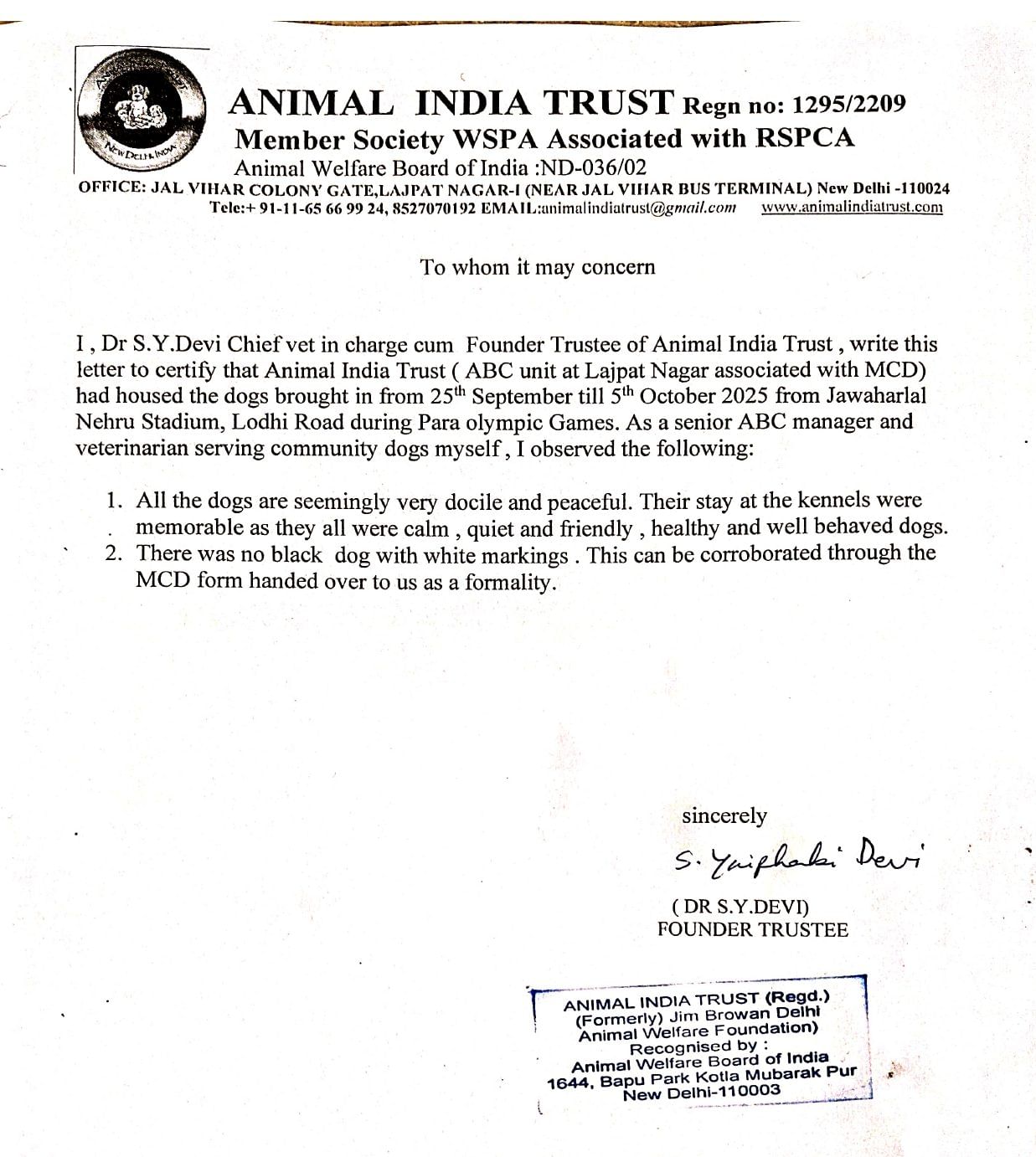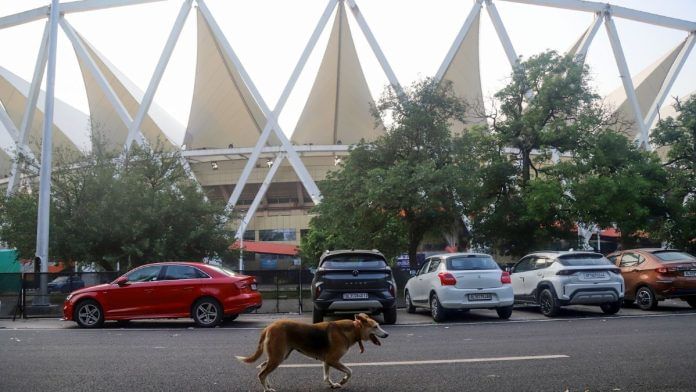India faced a national shame last week, when two Australian cricketers were molested in broad daylight in Indore during the ICC Women’s World Cup. The outrage was immediate and justified. Police combed through CCTV footage, identified the accused, and arrested him within 2 days. The system worked exactly as it should—swift, precise, and focused.
Contrast this with what happened earlier in New Delhi’s Jawaharlal Nehru (JLN) Stadium. During a para-athletic event, two foreign coaches suffered minor nips from a dog. The reaction this time? A blanket order from the Municipal Corporation of Delhi (MCD) to capture every dog in and around the stadium.
Nearly 50 sterilised, vaccinated, and friendly community dogs were rounded up, shoved into concrete cells, and held for a week. None of them matched the described dog—black with white markings—who was never found.
Vacuum effect
The captured dogs have still not been allowed to return to their home ground. Their feeding points have been sealed off. They now wander homeless, hungry and terrified.
Would we treat humans this way? Did we round up all the youths in Indore after the molestation case? Did we deny them all food and shelter because one man misbehaved? The answer is obvious—and it exposes our hypocrisy. When we dispense with all logic and empathy, and when we arbitrarily ‘punish’ animals only because they cannot speak or vote.
This isn’t just moral failure; it’s scientific failure. The JLN Stadium was carved out of a city forest in 1982. Since then, its resident dogs have peacefully coexisted with athletes, spectators, and staff. There hasn’t been a single recorded bite in over four decades.
The system worked well. During large events, local feeders—citizens who care for and vaccinate the dogs—were called to cordon them off. The dogs stayed calm, humans stayed safe. But this time, the MCD acted unilaterally. From 25 September, catchers began sweeping through the premises. They were only able to catch 11 dogs, already sterilised and vaccinated, yet they took them to an Animal Birth Control (ABC) facility. The rest were chased, beaten with sticks, and scattered.
That rash action triggered what experts call the “vacuum effect”. When resident, sterilised dogs are removed, new and unfamiliar dogs enter the area. These newcomers are often unvaccinated, unaccustomed to crowds, and easily frightened, which increases the risk of defensive bites.
The two coaches themselves confirmed that the dog who nipped them was not one of the resident dogs: he wore no collar, unlike the others, who were all tagged and friendly. The veterinary officer at the ABC centre later certified that no dog matching the description had even been brought in.

The bite was not an attack; it was fear. A frightened, chased dog acted on instinct—and then fled.
Also read: Bihar beyond Buddha and Mandal—why the 2025 polls are critical for Indian democracy
Cowardice in uniform
The Supreme Court has repeatedly ordered that sterilised, vaccinated community dogs must not be removed from their territories. The MCD ignored that order, violating both science and law. Its overreaction created the very problem it is pretending to solve.
Let’s also remember: India’s street dog population is not a canine failure but a human one. Unchecked breeding for profit, abandonment, and the absence of a sustained sterilisation programme feed the problem. Yet, instead of regulating breeders or funding scientific control, we go after voiceless animals.
Ironically, our own armed forces have realised what civic bodies refuse to acknowledge: Indian dogs are intelligent, loyal, and loving. The Indian Army, CRPF, and BSF now enrol and train desi dogs for combat and security. If our soldiers can trust them to protect the nation, surely our cities can coexist with them.
Public safety is not achieved by rounding up harmless animals simply to show something is being done. It comes from discipline, science, and compassion.
If we claim to be a civilised society, then we must stop picking on the helpless. Cruelty against the powerless is not governance; it is cowardice wearing a uniform.
Ambika Shukla is an animal rights activist and a trustee of People for Animals India. Her X handle is @AmbikaShukla15. Views are personal.
(Edited by Prasanna Bachchhav)







There is NO friendly stray dogs in the world. If a child is alone, even a lone stray dog wl try attacking her. A pack of strays wl certainly kill the child. A stray dog is wild dog. It fiercely protects its territory and kills other strays entering its territory. No mercy. Strays wl even attack an adult (so many youtube videos) if they are in strength. The hidden issue is outrageous concern for violent wild animals and not for humans